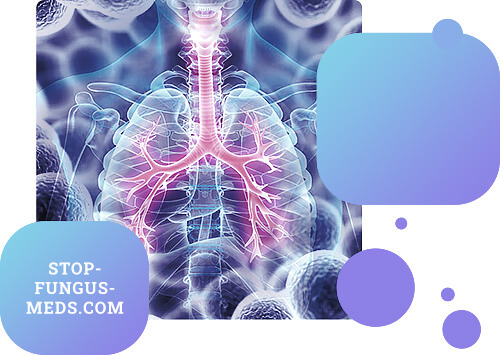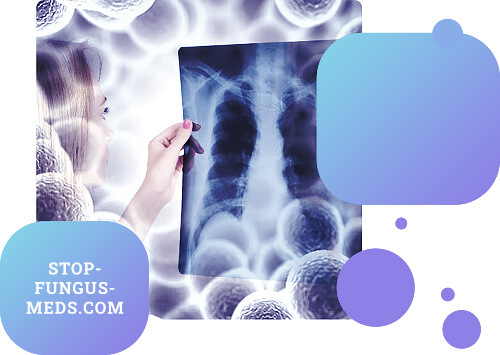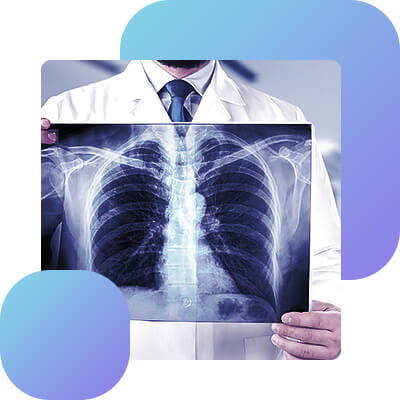Introduction
In 1882, the German scientist Robert Koch announced on March 24 that he had discovered the causative agent of tuberculosis. The World Health Organization has immortalized this event, on this day World TB Day is celebrated annually.
Tuberculosis is a chronic infectious and allergic disease characterized by formation of specific inflammatory changes (TB granules) in various organs. Tuberculosis occurs in people of all ages, but it is especially severe in infants and adolescents. Despite the fact that TB bacteria can affect all organs, children are more likely to have pulmonary and cervical lymph node tuberculosis. Bone tuberculosis and kidney damage are less common. As a rule, the source of infection is a person with TB, and less often, sick animals. Infection spreads through the air. By coughing, talking, and sneezing, a TB patient throws saliva and sputum particles into the environment, which remain in the air for several hours and get into people's airways with inhaled air. The sputum particles that get on the floor and surrounding objects dry out, and then are blown into the air with dust (a dusty path of infection). Infection can also occur when a TB patient comes into contact with dishes, towels and handkerchiefs. Tuberculosis bacteria can get into the body with food if the food is cooked by a TB patient, or through milk and dairy products obtained from a TB patient cow.

Tuberculosis has been known since ancient times and is still an important medical and social problem. Unfortunately, in the last decades the problem of tuberculosis has again become urgent all over the world, including in our country. According to the data of the federal state statistical surveillance, in 2008 in Russia 120 021 sl. of the first detected active tuberculosis were registered (in 2007 - 117 738 sl.). The TB incidence rate was 84.45 per 100 thousand population (in 2007 - 82.8 per 100 thousand) and exceeded the TB incidence rate 2.5 times before its growth in 1989. (33.0 per 100 thousand population).
The TB epidemic that started in Russia in the first half of the 1990s also affected the rates of child and adolescent morbidity that more than doubled over the last 10 years.
The share of children in the risk group for infection and tuberculosis has increased significantly. Thus, the annual risk of primary TB infection of children is 2% in Russia. It should be emphasized that in favorable epidemiological conditions the risk of primary infection of children does not exceed 0.2-0.3% and shifts towards older age groups.
In 2008, 3,155 children under 14 years of age became actively infected with the first-time tuberculosis (3,372 children in 2007); the country's average child morbidity rate was 15.13 per 100,000 of this age group (16.01 in 2007). The morbidity rate among children under a year old was 6.92 per 100,000 of this age group, 13.34 per 100,000 of 1-2-year-old children, and 21.5 per 100,000 of 3-6-year-old children. These data indicate a significant reservoir of infection among the population.
The morbidity rate among adolescents 15-17 years old is high. The national average TB incidence rate in this age group was in 2008. 33.85 per 100,000 (2007 - 33.5). In 2008, among all firstly discovered active tuberculosis patients of respiratory organs, bacillary patients made up 42.5%. In total 49 410 diseases with bacterial excretion were registered, index - 34,77 per 100 thousand of population.
According to preliminary data of the TB Monitoring Center, the mortality rate of Russian population from TB in 2008 was 16,6 per 100 thousand of population (in 2007 - 18,4, in 2006 - 20,0), which is lower than in the previous year.
It is worth mentioning a large number of patients diagnosed posthumously with TB and patients who died within a year after the disease was diagnosed - 4,532 people, including 16 children. This indicates shortcomings in organizing and conducting early TB diagnostics and late detection of patients, which contributes to the spread of infection.
Deterioration of the epidemic situation with TB among children and adolescents is largely due to social problems that have worsened or appeared in the last decade.
To date, tuberculosis remains one of the most widespread diseases in the world. Its victims are people of all ages, all nationalities and professions. To reduce the problem, WHO has identified active patient identification and immunization against tuberculosis as the main components of its program to fight the disease.
Tuberculosis etiology
The causative agent of tuberculosis is a typical member of the mycobacterial genus (MBT) related to radiant fungi. Mycobacterium tuberculosis (MBT) belongs to the Micobacteriacae family, the Actipomycetalis order, of the Mycobacteriim genus. Mycobacteriim has over 100 species, most of which are saprophytic microorganisms widely distributed in the environment.
The etymological word "mycobacteria" is derived from the Greek words myces - mushroom and bacteriim, bassgop - stick, twig. The component of the name "mushroom" is due to the tendency of these microorganisms to form thready and branching forms similar to mold. Its development requires oxygen, as it is an aerobic. Pathogens usually take the form of thin, slightly curved sticks with slightly rounded edges. Mycobacteria have begun to show a wide range of variability under the influence of adverse environmental factors affecting their functional properties. Thus, the following forms of mycobacteria have been recently discovered: filtered avizual varieties (ultrafine forms), L-forms (without a cellular shell), branchy giant forms and forms resistant to all specific antibiotics and chemical preparations.
There are 4 types of pathogen known:
- human type (most often, it causes tuberculosis in children);
- bull type (infection occurs mainly when using milk from sick animals);
- avian type (most often infected by chicken farm workers);
- mouse type (only field mice get sick).
Main properties of the causative agent:
- high resistance in the external environment (in wet rooms without light maintain viability up to 6 months, in books - 8-12, in water - up to 1 year), to low temperatures (maintain viability at - 260 °, with freeze-dried lyophilization - decades), to acids, alkalis and alcohols;
- quickly die in direct sunlight, in UV irradiation, by boiling (in 5-10 minutes);
- are sensitive to disinfectants with high content of chlorine (5-10% chloramine solutions, chlorine lime, etc.);
- change properties and form stable forms under the influence of various environmental factors, specific antibacterial agents and chemical preparations.
Sources of infection:
- Patient with bacillary form of tuberculosis (the causative agent is contained in sputum, urine, and in a mother with tuberculosis in breast milk);
- a sick animal (more often when not boiled milk is consumed);
- sick birds (mainly when eating eggs).
The main ways of infection transmission:
- airborne droplet;
- food; water;
- domestic contact;
- intrauterine.
Entrance gate of infection:
- upper airways, lungs;
- gastrointestinal tract (especially in children of the first 4 years of life).
Risk factors for tuberculosis development:
- poor living conditions, overcrowding;
- low hygiene culture;
- irrational nutrition;
- reduced immunity, etc.
Mechanism of tuberculosis development
At present, it has been established that one bacteria extractor can infect up to 10-12 people per year.
The primary infection goes through several stages:
- introduction of the pathogen through the mucous membranes of the respiratory tract, gastrointestinal tract or placenta;
- bacteriemia (the spread of the pathogen through the lymphatic and blood vessels);
- affection of regional (more often inside thoracic) and peripheral lymph nodes with development of specific tuberculosis inflammation in them.
Primary bacteriemia develops after the pathogen is introduced into the body. This period - primary tuberculous infection usually has no clinical manifestations and may last up to 6-8 weeks depending on the massiveness, virulence of mycobacteria and immunity level. By circulating in the blood, mycobacteria cause immunological restructuring of the child's body. At this time, a child discovers a tuberculin sample virus, i.e., the first positive tuberculin sample detected. If the protective functions of the organism were sufficient and prevented further reproduction of mycobacteria, the pathological process does not develop and the child remains almost healthy, though infected with tuberculin sample virus. The earlier primary infection is detected and a set of preventive measures is prescribed, the more likely it is to prevent a child from becoming infected.
With massive infection, reduced immunity, there are clinical manifestations of the disease, which corresponds to the concept: "Early tuberculosis intoxication". The process ends with micropoliadenitis (compaction of small peripheral lymph nodes). But this, as if a successful outcome, has a downside - immunological reorganization of the body and, for the whole life, the child remains sensitive to mycobacteria of tuberculosis.
Later, under unfavorable conditions, an inflammation may occur that is characterized by the appearance of specific changes in the affected organs.
The following stages of tuberculosis inflammation are distinguished: infiltration (formation of a tuberculosis center of different diameters), cottage cheese necrosis (caseosis), resorption (complete, incomplete), calcination. Calcination is not a complete healing, because in calcinates, as a rule, there are mycobacteria, which can activate after many years, penetrate into the blood, cause a secondary tuberculosis process and become a source of self-infection under adverse conditions.

Clinical and pathological changes that occur during primary infection with mycobacteria are commonly referred to as primary tuberculosis.
Clinical forms of respiratory tuberculosis in children
Main clinical forms of primary tuberculosis in children and adolescents
- Primary tuberculosis intoxication.
- Primary tuberculosis complex.
- Intra-thoracic lymph node tuberculosis.
The ability of a child's body, especially at an early age, to respond to a relatively small foci of TB infection with general functional disorders, creates conditions for the emergence of such a child form of TB as TB intoxication.
Primary tuberculosis intoxication
Primary TB intoxication often develops in children in the first years of life in the initial period of TB disease, soon after infection with mycobacteria.
The main clinical manifestations of primary tuberculosis intoxication:
- symptoms of tuberculosis intoxication increase;
- reduced appetite, weakness, fatigue, irritability, sleep worsening;
- neurovegetative disorders: sweating, headache, tachycardia;
- micropoliadenitis (moderate diffuse magnification of peripheral lymph nodes) is revealed;
- vira appears: tuberculin samples (papula 6 and pain);
- sometimes a nodular erythema is noted: red painful nodules (from pea to cherry size) appear on the skin of tibia along the course of vessels;
- the physiological increase is stopped or the body weight deficiency is determined;
- there is a propensity for intercourse diseases;
- there is a change of peripheral blood parameters: eosinophilia, neutrophilia, leukopenia, a slight increase in SEE and immunological status: a decrease in T-lymphocytes and their activity.
Duration of these clinical symptoms - from 1 to 4 months. With timely diagnosis and adequate specific therapy, recovery is possible. In case of unfavorable course of treatment, local forms of tuberculosis develop.
Primary tuberculosis complex
Primary tuberculosis complex is observed more often in preschool and school-age children due to increased contacts, periods of the most intensive growth and development of all organs and systems, and hormonal and immunological reorganization of the organism.
The frequency of morbidity among girls and boys is the same. In recent years, the primary tuberculosis complex is less common in comparison with the previous years and amounts from 9 to 18%.
The name "primary complex" was first suggested by researcher Raupke, who traced three main components in the mechanism of this form of disease development:
- Introduction of the pathogen through the upper respiratory tract into the peripheral parts of the lung (more often in the right) with subsequent development of the inflammation center (primary focus of specific inflammation in the lung tissue).
- Development of a specific lymphangitis (involvement in the inflammatory process of lymphatic vessels of the lung root, with the outflow of mycobacteria from this focus occurs through lymphatic vessels leading to regional lymph nodes, the so-called "inflammatory pathway").
- Involvement of regional lymph nodes in the process and as a result - the development of regional lymphadenitis.
Subsequently, in the center of the inflammation center in the lung, as well as in the corresponding lymph node, a cottage cheese necrosis (caseosis) of tissue is formed, and a perifocal nonspecific inflammation is detected around the circumference (as a result of an allergic reaction).
Main clinical manifestations of primary tuberculosis complex.
- Symptoms of intoxication are expressed: increased fatigue, sweating, weakness, malaise, febrile fever for 1-2 weeks, which is replaced by long-term high subfebritis;
- palpation of 7 to 10 groups of peripheral lymph nodes, soft elastic consistency, diameter from 2 to 10 mm (from millet to bean) with the phenomena of fresh inflammation in the axillary group of lymph nodes, which are more pronounced on the side of pneumonic inflammation;
- there are symptoms of lung damage: small shortness of breath, dry cough, local shortening of percussion sound over the focus of a specific inflammation, weak breathing, poor wet wheezing;
- Radiological changes in the lungs are detected: the primary pulmonary focus and the glandular component with a "path" (lymphangitis) between them, and in the phase of calcination - the calcified primary pulmonary focus (Gon's focus) and petrified lymph nodes of the lung root;
- changes in peripheral blood parameters: anemia, moderate leukocytosis, eosinophilia, increase in SOE up to 35 - 40 mm/h;
- tuberculin samples are always positive.
Complex specific therapy leads, as a rule, to clinical and radiological recovery with formation of small petrificates in the lung and lymph nodes. Known foci, especially in lymph nodes, contain mycobacteria that retain virulence, which under unfavorable conditions can become a source of reinfection with the development of secondary tuberculosis.
Тablation of the intra-thoracic lymph nodes (bronchoadenitis)
Tuberculosis of the intra-thoracic lymph nodes (bronchoadenitis) occupies the largest specific weight - from 70 to 80%, among all newly infected children with tuberculosis of respiratory organs.
Bronchoadenitis is characterized by the fact that the primary focus is formed in the intrachest lymph nodes: paratracheal, tracheobronchial, bronchopulmonary. In this form of tuberculosis, both individual groups and all lymph nodes of the lung root and mediastinum may be affected.
In young children, the disease is usually severe. Clinical manifestations depend on the degree of prevalence of infiltration-inflammatory or caseoid changes in lymphatic tissue.
The main clinical manifestations of bronchoadenitis:
- symptoms of intoxication are expressed: sweating, weakness, increased fatigue, mood discomfort, appetite disorders, high subfemilitude;
- there is a syndrome of airway compression: Difficulty in breathing, coughing, "Bitonal" - simultaneously with low, high tone can be heard due to compression of the bronchus by enlarged lymph nodes, increased bronchophone and whispering speech below 1 thoracic vertebra (D' Espin symptom), shortening of the percussion sound in the course of the spine below the projection area of II-III thoracic vertebrae in preschool children, in older children - below IV-V (symptom of the Koran) and in the intertropatular space (symptom of Filatov), bronchial (hard) breathing is expressed;
- expansion of the venous network on the front surface of the thorax is determined in the area of 1-2 intercostal or at the back in the upper third of the intertropathic space (Frank's symptom);
- radiological changes are detected: increase in the size of the lung root with convex or blurred outlines, infiltration in the root zone of the lung tissue;
- in bronchoscopy: presence of bronchial fistulas, granulation in the fistula zone, bronchial narrowing;
- mycobacteria is found in gastric lavage waters;
- parameters of peripheral blood change: monocytosis, lymphopenia, eosinophilia, accelerated SOE appear.
The outcome, in cases of adequate treatment, may be a complete recovery. In children who have contact with a TB patient in the family, with massive infection, especially with late diagnosis and inadequate treatment, caseose forms of bronchoadenitis may develop. These forms are characterized by a wave-like chronic course.
Complications of caseosic bronchoadenitis:
- atelectases (due to bronchus shutdown in case of compression by enlarged lymph nodes or because of its occlusion with caseosis masses);
- pleuritis.
Untimely and ineffective treatment can lead to pulmonary tissue disintegration and cavern formation, as well as contribute to lymphogenic dislocation of mycobacteria into other organs and systems where the secondary tuberculosis process develops.
Disseminated pulmonary tuberculosis
Disseminated pulmonary tuberculosis is the most severe form of TB in children, characterized by the formation of multiple specific foci in the lungs. Dyseminated pulmonary tuberculosis develops mostly in young children in cases of family contact with a bacterial agent.
At present, due to extensive specific vaccination and revaccination, timely diagnosis of primary forms of tuberculosis and effective treatment, acute disseminated tuberculosis is rare in childhood - up to 1%.
A specific feature of dysfunctional lung tuberculosis in children is the lymphogematogenic pathway of infection. At the same time, pockets of dysfunction are scattered across all lung fields, with their more massive location in the upper and middle zones of the lung and always affected by intrathoracic lymph nodes.
The main clinical manifestations of dyseminated tuberculosis:
- acute symptoms of intoxication: severe, high fever (39-40.C), heavy sweats, sleep disorders, appetite, meningial symptoms are possible;
- rapidly increasing symptoms of respiratory failure: shortness of breath, agonizing cough, superficial breathing with auscultation, a large number of wet fixing wheezing rales in the interspacula;
- peripheral lymphadenitis is detected;
- on the X-ray of the lungs: multiple dispersion in the form of small foci, located symmetrically, more in the upper and middle zones of the lung is determined;
- mycobacterium mycobacterium is detected in gastric lavage waters;
- parameters of peripheral blood: monocytosis, lymphopenia, eosinophilia, high SOE.
Disseminated tuberculosis is often accompanied by bacterial excretion (61.3%), breakdown of pulmonary tissue (29.1%) and is the most severe form of tuberculosis in children, as it is possible to generalize the process with the formation of foci not only in the lungs and intrathoracic lymph nodes, but also in the liver, spleen, brain, and intestines.
Focal lung tuberculosis
Focal lung tuberculosis is characterized by inflammatory changes in the lungs, mainly exudative in nature with caseosis necrosis in the center and relatively fast dynamics of the process (decay or resorption), bacterial excretion and lesions inside the thoracic lymph nodes.

Focal tubercle may be the primary form in first-infected children, mainly those of pre-pubertary age (11.6%). However, focal lung TB is more likely to be an early form of secondary TB (88%).
Focal TB is clinically severe (coarse pneumonia type).
Main clinical manifestations of focal tuberculosis:
- acute symptoms of intoxication: weakness, malaise, increased fatigue, prolonged hectic fever, heavy sweating, sleep disturbance, appetite;
- changes are observed on the lung side: cough with sputum, shortness of breath, chest pain, dulling of the percussion sound over the affected portion, bronchial breathing, sounding multiple small and medium bubble wheezing, may join respiratory failure;
- radiological changes in the lungs: extensive focus areas of lung tissue decay are detected, and in the thickening phase there are dense foci, sometimes with the inclusion of lime and fibrous changes in the form of bruises;
- there is a massive bacterial discharge;
- changes in peripheral blood parameters: reduction of hemoglobin and erythrocytes, leukocytosis, increase in SOE up to 50-60 mm/hour.
Cavernous lung tuberculosis
Cavernous lung tuberculosis is a severe form of lung tuberculosis in which the decay phase always ends with the formation of caverns.
Lung cavernous tuberculosis can be unilateral and bilateral, with one or more caverns. It most often develops in children against the background of other forms of lung tuberculosis: primary tuberculosis complex, disseminated tuberculosis, and focal tuberculosis with pulmonary tissue decay, which is usually associated with late detection of the disease.
Main clinical manifestations of cavernous lung tuberculosis:
- Intoxication symptoms: high fever, weakness, sleep disturbance, appetite;
- changes are observed on the lung side: cough with sputum, shortness of breath, chest pain, dulling of percussion sound over the area of the lesion, bronchial breathing, sounding small and medium bubble wheezing, often accompanied by respiratory failure;
- Radiological changes in the lungs are detected: focus areas of pulmonary tissue decay are detected;
- there is a massive bacterial excretion (the causative agent is excreted from sputum, stomach washing water, bronchi);
- Changes in peripheral blood parameters: hemoglobin and erythrocytes are reduced, high leukocytosis, increase in SCE up to 50 mm / h.
Pneumosclerosis, emphysema, bronchiectases with corresponding clinical manifestations are gradually formed in lungs.
Tuberculosis of peripheral lymph nodes
Tuberculous lymphadenitis is characterized by lesions of cervical, submandibular or axillary lymph nodes.
Tuberculosis of peripheral lymph nodes may be the only manifestation of local tuberculosis; it is usually associated with primary tuberculosis infection.
Infiltrative, productive, and caseous forms of tubercular lymphadenitis are distinguished.
The main clinical manifestations of peripheral lymph node tuberculosis:
- Tuberculosis intoxication is poorly expressed;
- moderate increase of cervical, submandibular or axillary lymph nodes is detected;
- in affected lymph nodes fistulas are gradually forming (in 30-32% of cases).
The poor symptomatology of tuberculosis lymphadenitis often leads to their late diagnosis. Puncture biopsy, cytological and bacteriological examination of the pathological material provide significant assistance in diagnostics.
Prevention and treatment of tuberculosis in children
Профилактика туберкулеза
1. Antiepidemic work in the focus of infection (hospitalization of the patient and intensive complex treatment in the hospital until the complete cessation of bacterial discharge, conducting final disinfection, regular monitoring and examination of children from the focus).
2. Dynamic monitoring of the risk group and its timely recovery.
The risk group includes:
- Children and adolescents with burdened hereditary tuberculosis (from family contacts, with TB virus samples);
- patients with chronic respiratory diseases, diabetes mellitus, and ulcer, receiving corticosteroid and radiation therapy;
- socially maladapted population group;
- women during pregnancy;
- medical personnel of the ambulance and intensive care units;
- teachers.
3. Conducting preventive treatment to all contact persons.
4. Improving the public health culture.
5. Regular check-ups of employees of all children's institutions, especially pre-schools, at the TB dispensary.
6. Organizing health promotion activities among all children.
7. Sanitary and educational work among the population using mass media.
Specific prevention of tuberculosis in children
Vaccination (revaccination) of BCG. BCG-M is administered according to the vaccination calendar to healthy newborns and uninfected TB children in the 1st, 5th, and 10th grades of the school without contraindications.
Preventive TB treatment is carried out to prevent TB cases in the following groups:
- Children and teenagers infected with tuberculosis for the first time (in the early period of tuberculosis infection with tuberculin virus samples, in the early period of tuberculosis intoxication).
- Children and adolescents infected with tuberculosis with increasing tuberculosis sensitivity and previously infected with tuberculosis with hyperergic reaction to tuberculosis.
- Children and teenagers who are in contact with TB patients.
Scheme of preventive treatment:
- Izoniazid 10 mg/kg once a day after meals in combination with pyridoxine.
- Pirazinamide: 25 mg/kg at 10.00 after meals daily.
- Embutol at 20 mg/kg daily at 17.30 before meals.
Duration of preventive treatment course - 2-3 months, under the control of general clinical examination.
Currently, the prognosis for early diagnosis and timely comprehensive treatment is favorable in most cases. In 75% of cases, after 9-12 months, complete resorption of pathological changes in lung tissue and intrathoracic lymph nodes is observed. In 25% of cases the process ends with either thickening or calcination, mainly in the intra-thoracic lymph nodes. The effectiveness of tuberculosis treatment decreases and the prognosis is burdened in case of intercourse diseases. The prognosis always remains serious for young children from socially disadvantaged families and bacillar foci.
Program of complex examination of a patient in case of suspected TB:
- Careful collection of anamnesis (timing and quality of BCG vaccination, identification of contact with the source of infection);
- full physical examination (evaluation of weights, examination of all groups of peripheral lymph nodes, percussion and auscultation of the lungs, determination of liver, spleen size, etc.);
- bacteriological examination (sputum, bronchial and stomach washing water, urine);
- Tuberculinodiagnostics (intradermal sample of Mantu with 2 TE of PPD-L, and in case of negative result with 100 TE of PPD-L, tuberculin provoke samples);
- bronchoscopy;
- positional radiography and tomography;
- laboratory tests: clinical blood and urine tests, bilirubin, AST, ALT blood.
Principles of tuberculosis treatment
Treatment should take into account the age of the child, the form and activity of the TB process, and should be complex, stage-by-stage, and long-term.
- Stage 1 - intensive phase of treatment in hospital conditions, duration - 8 weeks.
- Stage 2 - phase of treatment continuation in an inpatient clinic or sanatorium, duration - 16-20 weeks.
- Stage 3 - dispensary surveillance in the conditions of TB dispensary.
Medicament therapy:
Chemotherapy - the main method of treatment of children with tuberculosis, begins immediately after diagnosis, is carried out with antibacterial anti-TB drugs in various combinations, long and continuous.
Phase 1 treatment: intensive chemotherapy of 3 preparations (isoniazid, rifampicin, pyrazinamide) or 4 preparations (isoniazid, rifampicin, streptomycin, pyrazinamide). In this case, a monthly general clinical examination, clinical tests of blood and urine, bilirubin, ALT, AST and sputum examination on MBT with the determination of sensitivity to chemicals, and in 3 months - X-ray control. As a result of the performed treatment, inflammatory changes should be eliminated, functional capabilities of respiratory and cardiovascular systems should be restored.
2-phase treatment continuation: combination of 2 (isoniazid and pyrazinamide) or 3 preparations (isoniazid, pyrazinamide, ethambutol) in 2 stages.
Stage 1 (treatment course 8 weeks) is carried out in patients with primary tuberculosis. At the end of treatment, destructive changes should be eliminated (with minimal residual changes in the affected organ), bacterial excretion should stop in 100% of cases.
Patients with complicated forms of primary tuberculosis and bacterial discharge should be treated in the 2nd stage (12 weeks). At the end of treatment, destructions and inflammatory changes in 85% of cases should be eliminated, functional capacity of respiratory and cardiovascular systems should be restored in 85% of cases, bacterial discharge should stop in 100% of cases. The course of chemotherapy should be controlled by liver samples (hepatotoxic drugs), urine tests (due to nephrotoxicity of drugs) and sputum sensitivity tests (due to rapid development of resistant forms).
Pathogenetic therapy: desensitizing therapy (calcium preparations), antihistamines, vitamin therapy (preparations of B group with obligatory inclusion of pyridoxine, C, P, A), immunotherapy.
The greatest efficiency of chemotherapy is achieved when it is carried out in sanatoriums, where general tonic measures are widely used, especially climate treatment.
Comprehensive, long-term specific therapy provides a stable cure and prevents the development of generalized forms of tuberculosis.
Conclusion
The main tasks to reduce tuberculosis morbidity in Russia at the present stage are: financing of programs to improve the material base of the TB service, development and financing of programs to prevent tuberculosis of the TB service workers; solving personnel problems of the TB service; uninterrupted supply of anti-tuberculosis drugs and other medicines for treatment of concomitant diseases in TB patients, improvement of preventive work in the hearth.
Summarizing the leading problems of tuberculosis in children and adolescents, we can point out their social orientation and the need for close integration with the general TB prevention and detection network. The work on conducting educational activities among the population is very important. In this connection, a cycle of classes on TB prevention for teachers and caretakers, and publication of relevant literature for them, is expedient. Pupils, in their turn, should carry the acquired knowledge to their families. The school (educational) collective should become one of the links in the chain of sanitary education according to the formula: "teacher-pupil-family". In the educational system it is necessary to use more actively modern media, including cable TV, the Internet, to create target information programs and video clips. The issue of brochures, booklets, sanitary education bulletins also remains important.
By: Dr. Susan Bard










